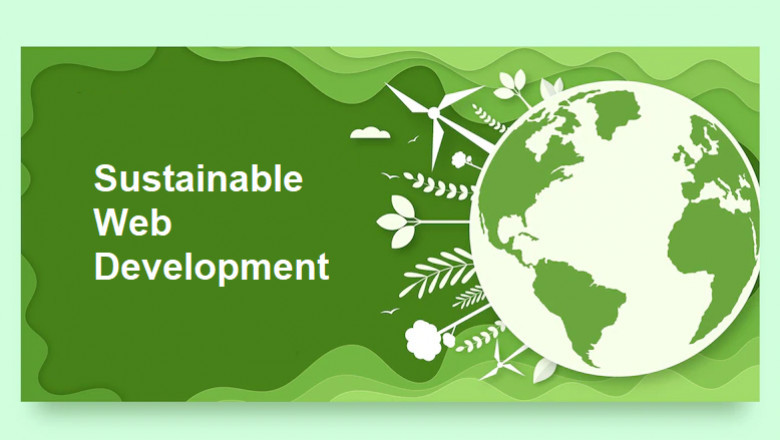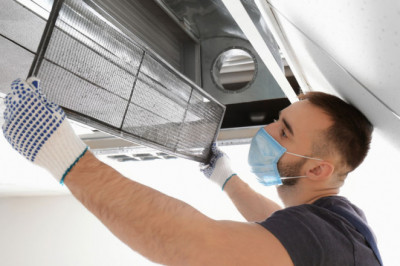views

We have heard about eco-friendly buildings, eco-friendly products and eco-friendly services, but have you heard about ‘eco-friendly websites’? Don’t be taken aback because eco-friendly websites are the next big thing in the tech world. We all know that our planet is headed towards an unprecedented climate change, and most parts of the world have already begun to feel its effects.
Unfortunately, e-wastes including the Internet and its usage have made a significant contribution to it. In an attempt to bring a change, the London WordPress agency Wholegrain Digital has implemented a brilliant concept known as the Sustainable Web Manifesto. According to it, if the Internet was a country, it would be the seventh-largest polluter in the world.
What’s even more alarming is that this pollution will grow considerably by 2030. But how can the Internet pollute the world? The answer is power consumption and the CO2 emitted in the process. From a simple mobile device to telecom networks, large servers and data centers, the Internet uses a huge amount of electricity every day to keep devices and the tech world up and running.
As more devices, websites and their users keep piling up with every passing year, there is an urgent need to find web development solutions that will lead to sustainability through less power consumption and greener development solutions.
So what is Sustainable Web Development?
Sustainable web development is the process of developing web applications by adhering to coding practices that aim to reduce energy consumption by web apps through optimization, minimalism and green hosting services. By making subtle changes in the coding style, developers can create applications that have a considerably lower web carbon footprint.
A BBC article states that the carbon footprint of the gadgets, the Internet, and the systems used for supporting and developing them account for 3.7% of the total greenhouse emissions, and it has been forecasted that by 2025, these emissions will double.
Adding to this substantial amount of footprint is the seamless browsing of the sites and the apps, and businesses making prolific use of complex software systems but it is the developers who need to shoulder the responsibility of reducing it. Even during the creation of a web app, a lot of energy is required and used up, and this consumption can add up to days when the app to be developed is more complex.
So, how can web development become greener?
Proper development practices can make websites leaner and bring down their obesity. Almost two decades ago, most web pages were plain, old HTML, but today, there’s hardly a web page that’s only HTML. Most of the time, clients look for sites that are visually appealing which means a web page needs to have high-quality images, videos and animations.
All these add up to make the site obese and go bigger on power consumption. To make it leaner and greener, modern-day developers have come up with the following solutions.
Picking green hosting services
One of the simplest yet effective ways to lower your site’s carbon footprint is to select a green host. Wondering what is a green host? Green hosts provide servers that run on renewable energy. Though there are only a handful of green hosting services (and they come a tad bit expensive), more and more local servers are moving to green hosting options.
There is an Icelandic website called orangewebsite.com that offers hosting solutions which are powered by 100% geothermal energy. Google and Apple are also becoming greener by providing sustainable cloud-based services.
Optimizing images
In a detailed report on the state of images, HTTP Archive mentions that images happen to be ‘the most popular resource type on the web’. With proper image optimization, developers can cut down on the page size, thus making it smaller and faster to load.
Proper techniques like CSS sprites, choosing the correct file type (JPEG, PNG or GIF), and proper size shredding on Photoshop or other image optimization tools, can help with this process without compromising the quality of the images.
Smart designing with lesser add-ons
Besides visual elements, there are other things that can make a web page heftier. Open a website and there will be a dialogue box waiting to pop up and ask you whether you would like to subscribe or login to the site. Next in line are random ads, auto-play videos, sharing buttons, maps, etc. adding up to the overall page size.
Given that a website itself has buttons, chatbots, forms and other functions to deal with, it is better if the extras are kept limited. The concept of smart designing becomes imperative here because it not only helps in the elimination of unwanted design elements but also makes the interaction of apps better and easier. For instance, a good designer will prefer scattering a few images and videos to other pages instead of cramming them all into one.
Smart Coding
Smart coding attempts to minimize the use of resources and increases the page speed, which in turn results in lesser consumption of energy. There are plenty of ways in which one can increase the overall site speed by applying coding techniques that include:
- working on cache timing
- lessen request overheads
- minimize payload size
- make use of shared libraries
- optimize sites for being browsed on mobile devices
A good way to get some meaningful insights on improving your coding and website performance is by utilizing Google PageSpeed. The PageSpeed tools analyze and optimize websites and provide reports and insights on the performance of a web page on both desktop and mobile devices. Besides getting useful PageSpeed insights, developers also get tips and tricks to improve their site’s performance.
Wrapping Up with a Quick Recap
Technology has permeated almost every sphere of our lives, but it has also amplified the amount of energy required to run it. Advanced technologies like cloud computing, quantum computing, IoT, Machine Learning and blockchain have further compounded the energy requirements.
So the efforts are being redirected to make technologies more sustainable. Web application development service has emerged as one of the most efficient ways to shrink the carbon footprint of the digital world. Besides reducing Internet pollution, sustainable development also leads to value-based services for businesses.
Hence, make a wise decision while hiring web development services. Ask how they can help in making your site more energy-efficient and yet keep it good enough to attract visitors and serve its purpose. A small step from your side can go a long way in making our planet a better place to live in.












Comments
0 comment